Mitsubishi is quite an interesting Japanese automaker. A couple of decades ago, they were not only a leader in the industry, but also in premiere motorsport disciplines like rally raid and the World Rally Championship.
Nowadays, Mitsubishi is far too busy finding new ways to facelift the decade-old ASX and trying to sell people thinly disguised Renaults.
Things used to be different, however. As well as their state-of-the-art innovations, Mitsubishi also took things seriously when it came to performance cars.
We all know about the Lancer Evolution with its rally pedigree and the GTO with its 4-wheel steering and V6 power.
But, there is one more sports car from this once truly great automaker that far too many people have forgotten about — the Mitsubishi Starion. In this article, we’ll discuss this underappreciated jewel in detail.
Mitsubishi Starion Turbo: Production and Positioning
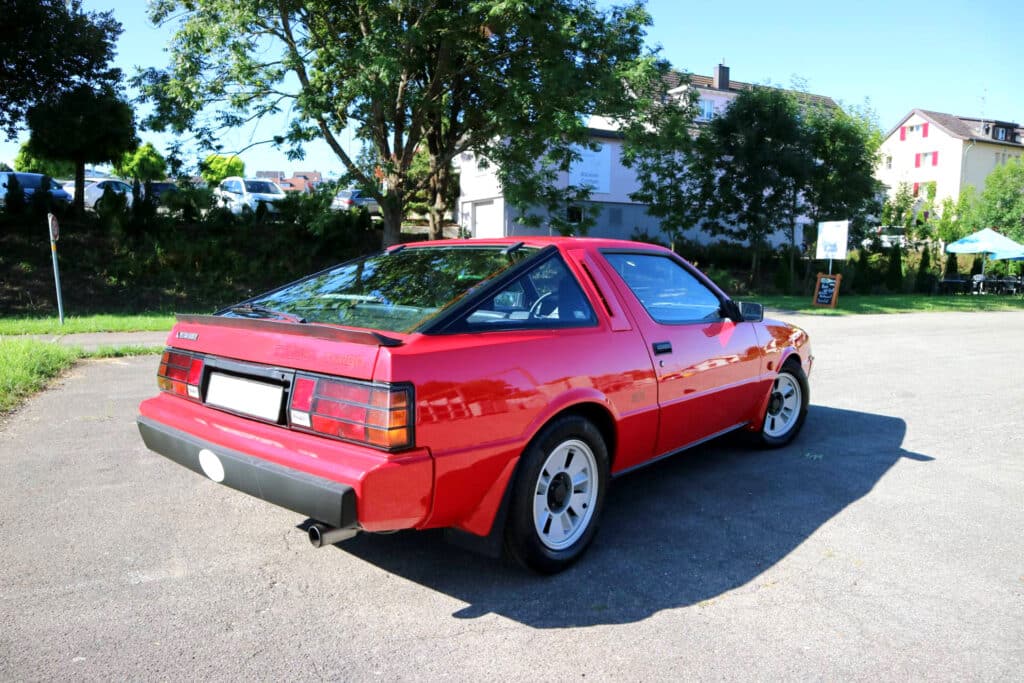
The Starion made its debut in 1982, and it was Mitsubishi’s answer to the steadily growing segment of 2-door Japanese sports cars, dominated by the Mazda RX-7, Nissan’s Z cars, and the Toyota Supra.
It was intended as an indirect replacement for Mitsubishi’s even lesser-known Galant Lambda, also called the Sapporo in other markets.
It laid down the groundwork for some of the company’s tuner car legends, like the Eclipse and the aforementioned GTO. Before any of those came to market, the Starion took that place in the automaker’s lineup.
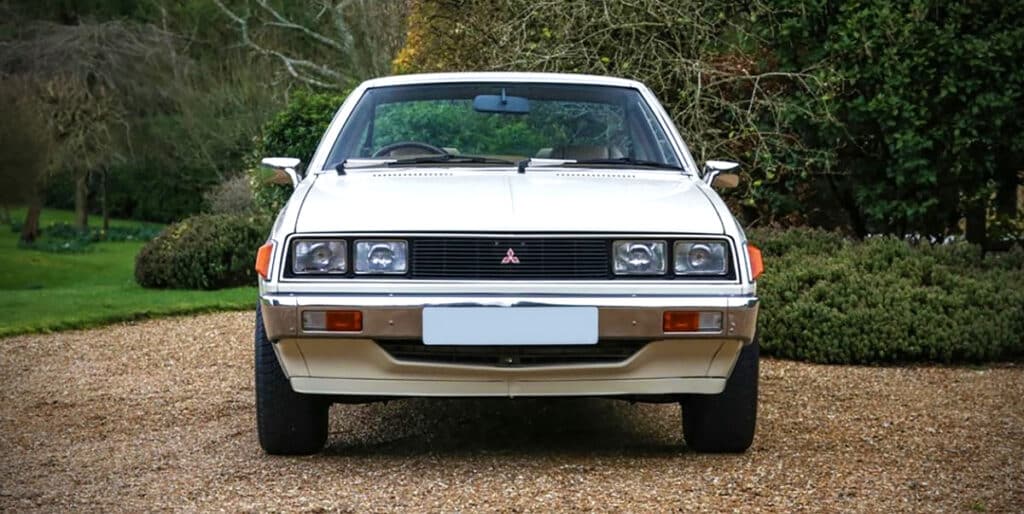
While the Starion was for sale, Mitsubishi’s partnership with Chrysler was still going strong, which meant that the Starion received its own badge-engineered versions in North America.
Despite being sold under the Dodge, Chrysler, and Plymouth brands simultaneously, all three of them carry the same Conquest model name.
The Starion’s production was carried out at Mitsubishi’s Nagoya manufacturing facility, and it lasted until 1989. The Eclipse would take the Starion’s place in the lineup that same year.
One of the more interesting things about the Starion is its name. According to Mitsubishi, the name is a combination of “star” and Arion, the horse that Hercules rode in Greek mythology.
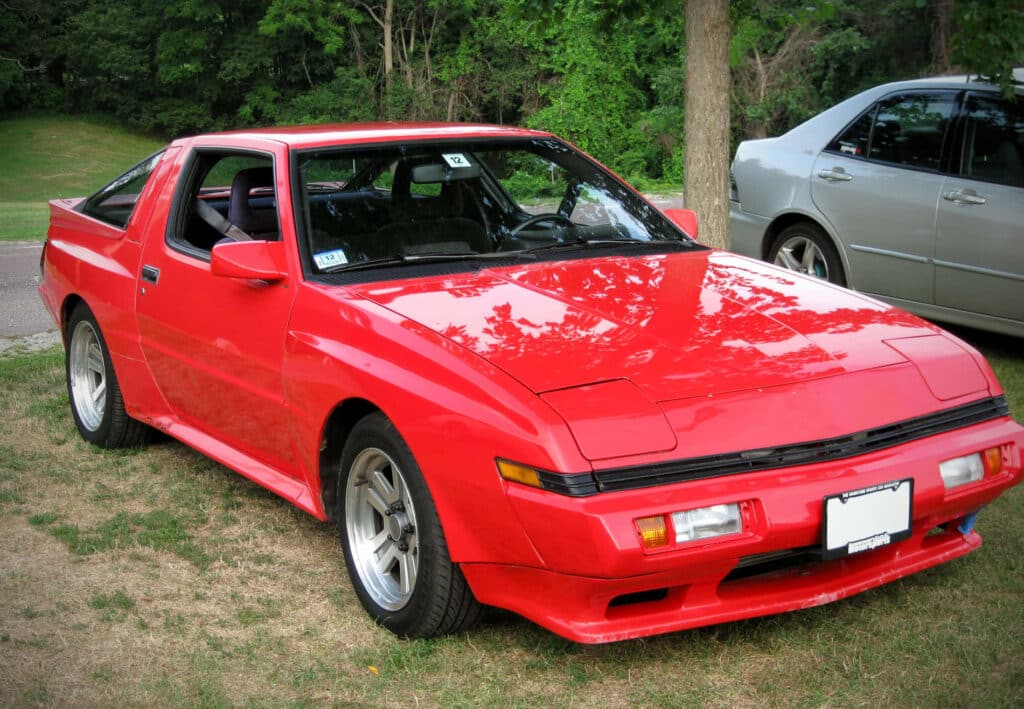
However, according to a lot of counts, the name Starion came from Mitsubishi’s Japan headquarters struggling with the pronunciation of the word “stallion.”
Whatever the case may be, the Starion name is definitely a cool one, and it does sound pretty mythical and powerful, which is what Mitsubishi was aiming for anyway. For the entire production run, the Starion was Mitsubishi’s top-of-the-line sports car.
How many Mitsubishi Starions were made? Well, from 1982 to 1989, about 50,000 combined. This includes the DSM derivatives and Mitsubishi’s own variants across all global markets.
Specs, Performance, and Handling
Production years: 1982-1991
Body style: 4-seat hatchback
Powertrain layout: RWD
Engine: 2.0L G63B turbo I4, 2.6L G54B turbo I4
Power: 145 hp to 175 hp
Torque: 185 lb-ft to 223 lb-ft
Transmission: 5-speed manual, 4-speed automatic
Weight: 2780 lbs to 2950 lbs
Length: 4410 mm to 4400 mm
Ground clearance: 155 mm
Top speed: 136.7 mph
0-60 time: 7.5 to 8 seconds
Throughout the production run, the Starion was available with one of two different powertrains.
The base models came with a 2.0-liter turbocharged 4-cylinder, known under the internal codename G63B. Another option was a 2.6-liter turbocharged 4-cylinder, carrying the codename G54B.
Despite the slightly confusing codenames, both of these engines are part of the same family as the iconic 4G63, which powered everything from the Eclipse GSX to the Evo. In the Starion, the power output was dependent on a variety of different factors.
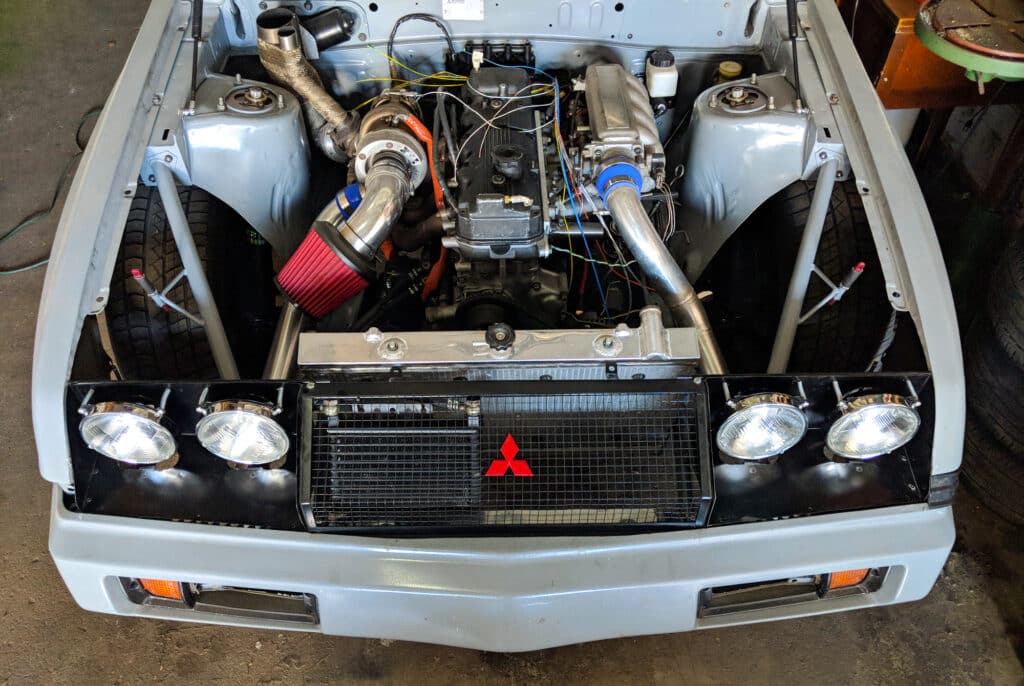
In North America, the lineup started with the LE trim level, with new ones being added every one to two model years.
The top-of-the-line version in the United States and Canada was the ESI-R. It had both the widebody and the intercooled turbocharger — intercooler turbo, as the badge on the back proudly stated.
Meanwhile, the Chrysler versions were dubbed LE, TSI, and Technica. The TSI variant was the same as Mitsubishi’s ESI-R, with the intercooler and the wide body. The Technica, meanwhile, had a narrow body and did away with the intercooler.
Finally, there are the JDM variants of the Starion. The lineup started with the GX, and next up from that were almost a dozen GSR versions.
Confusing lineup aside, the Starion did offer a huge amount of choice to fit just about every buyer’s needs.
Between the narrow and wide body versions, another key difference was the wheels. The widebody Starion’s wheels are pretty instantly recognizable. Some models also upgraded their 4-lug wheels to 5-lug items.
Engine Details
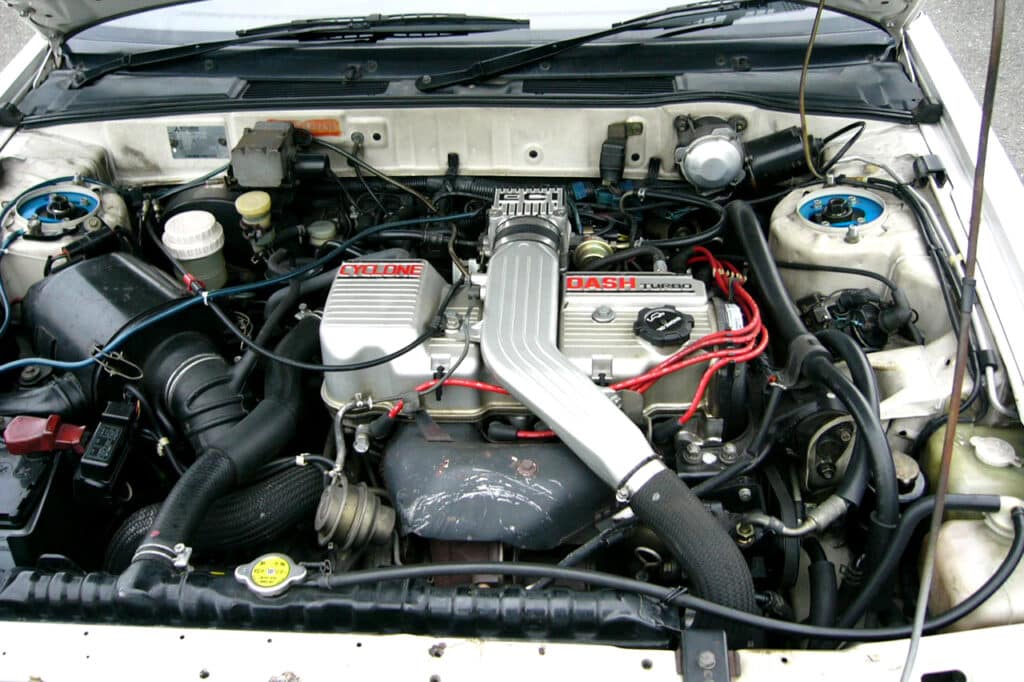
As mentioned previously, the Starion was offered with one of two powertrains. The 2.0-liter G63B engine had either 8 or 12 valves, and it used a single overhead camshaft design.
Later on, Mitsubishi updated this powertrain with a DOHC design, and that would go on to appear in the Evo. The SOHC version in the Starion put out between 150 hp and 197 hp.
As well as the 2.0-liter, Mitsubishi also offered a larger 2.6-liter G54B 4-cylinder, also with a single overhead camshaft design.
This engine had a lower redline, and while it did have a torque advantage, it was the lazier of the two. This was the de facto powertrain for the American market, while everyone else got the 2.0-liter.
Despite that seeming like a piffling amount of power by today’s standards, it was plenty to get the Starion moving, as both the narrow and wide bodies tipped the scales at less than 3,000 lbs.
The various power outputs also meant that there was a significant disparity between acceleration and top speed on the different models.
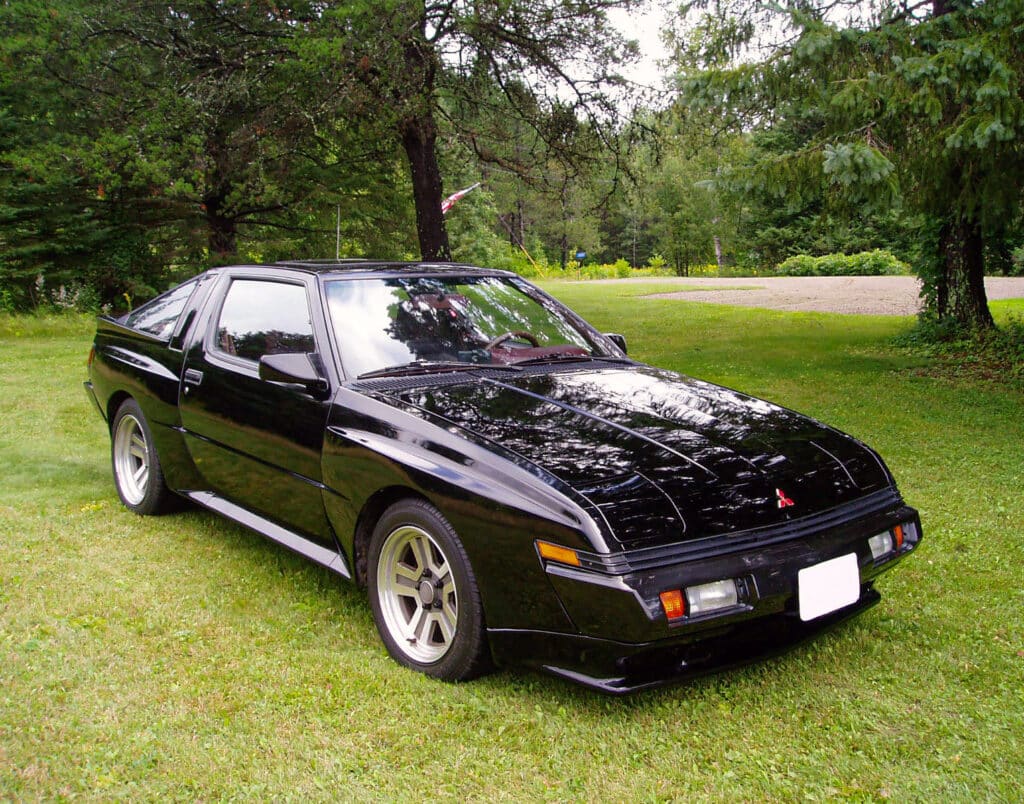
0-60 mph is in the neighborhood of 7.5 to 8 seconds, while the top speed ranges from 133 mph to 142 mph.
The Mitsubishi Starion is driven at the rear wheels and powered by either a 5-speed manual or a 4-speed automatic transmission.
Later on during the Starion’s production years, Mitsubishi replaced the 8-valve head with a 12-valve version, called the Super DASH, or Dual Action Super Head, which improved performance by activating the 3rd intake valve above a certain RPM.
Drivetrain Details
Despite the Starion being a replacement for the Galant Lambda/Sapporo, it uses the same front-engine, RWD layout, making it an excellent drift car.
It might seem unlike Mitsubishi, especially from a present-day perspective, but the Starion was RWD only, and AWD was never offered.
The Starion came with the vaunted MacPherson strut suspension at the front, and fully independent suspension at the rear. Some models also offered a limited slip differential for better cornering. Front and rear sway bars were standard.
Later on, Mitsubishi offered the Sports Handling Package, which included slightly wider wheels and adjustable struts.
Driveability
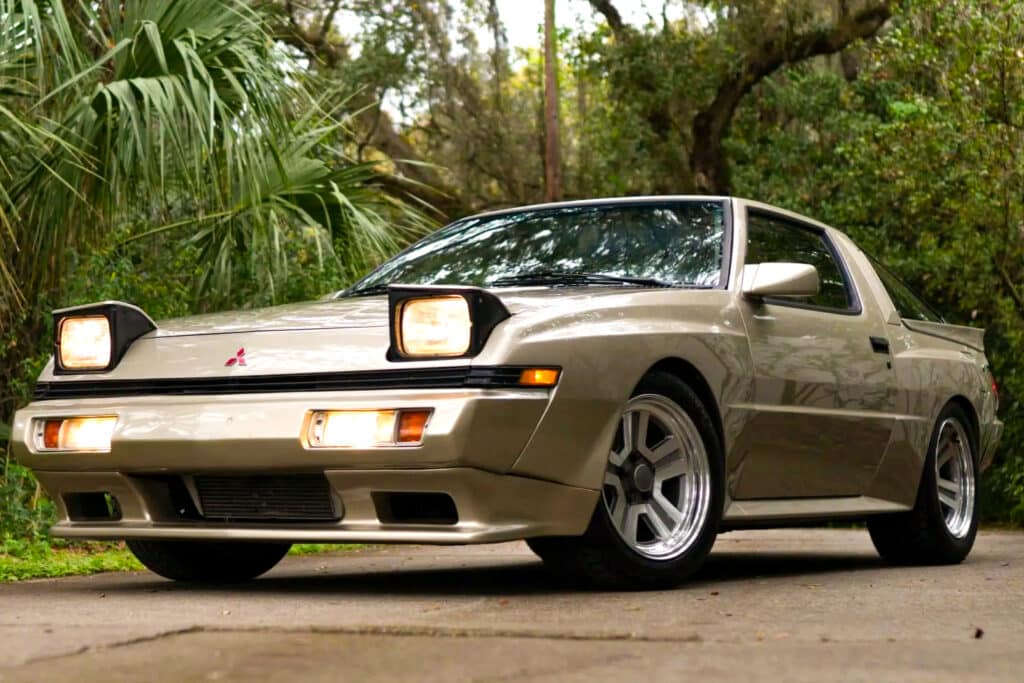
All that, combined with Mitsubishi’s engineering expertise, means that the Starion is an awesome car to drive if you’re mindful of its age.
By modern standards, it isn’t exactly groundbreaking, and it does take quite a bit of perking up for it to get moving.
That said, it’s not the slowest car in the world. If you stay in the powerband and treat it like the older sports car that it is, you’ll have a great time.
Being an older turbo car, there is a decent amount of turbo lag. The boost gauge is right in the middle of the gauge cluster, and it will show you exactly where the turbo is in terms of spooling. Once the boost kicks in, you’ll definitely feel it.
One area where the Starion suffers in terms of driving experience is the steering. Due to it having a gearbox steering setup, the steering can feel a bit vague.
You do have to work it a little to extract the most out of it, but you’ll definitely reap the rewards.
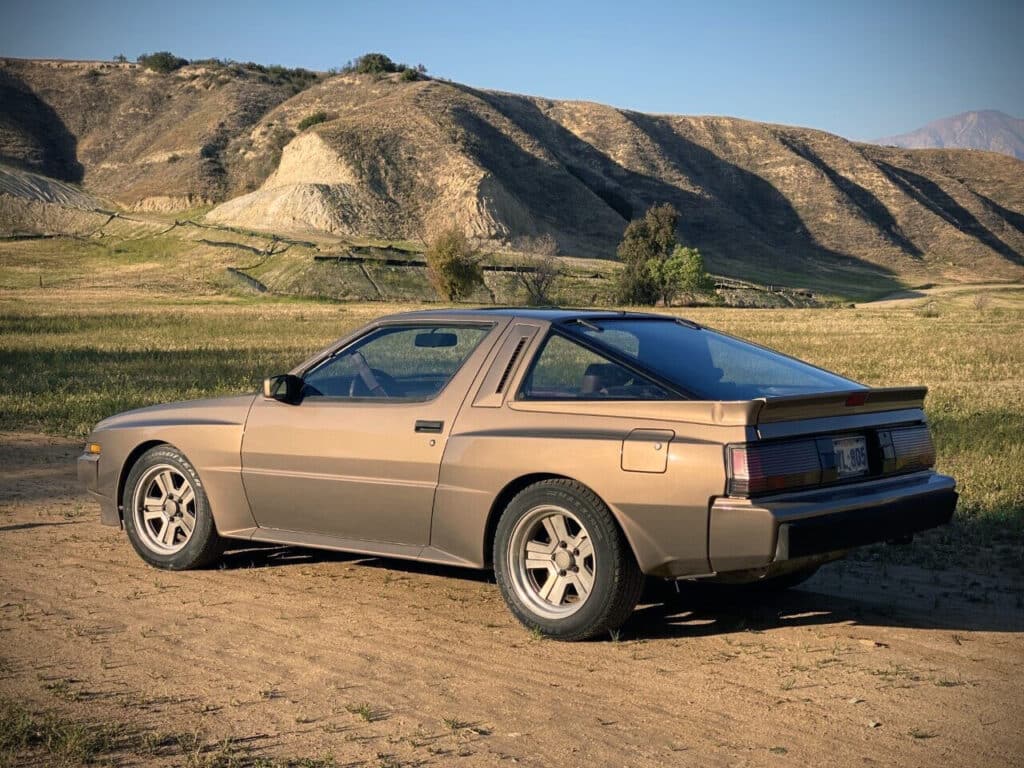
What’s more, the Starion is approaching the age of 40. This means, among other things, that there is virtually nothing in terms of driving assistance or electronic nannies to get in the way.
No traction control, no stability control, none of that. It’s almost all down to your skill, and that’s the appeal of classic cars like the Starion.
Even though the Starion was RWD only, Mitsubishi got very close to making a 4WD version. They were prepping the Starion to compete in Group B rally racing, but Group B was banned before they could homologate it.
The Group B Starion prototype used a transfer case from the Pajero, and a 350 hp version of the 2.0-liter turbo engine, while also managing to be lighter than the ubiquitous Audi Quattro.
Elsewhere, the Starion was a pretty successful race car in a variety of different disciplines.
Equipment
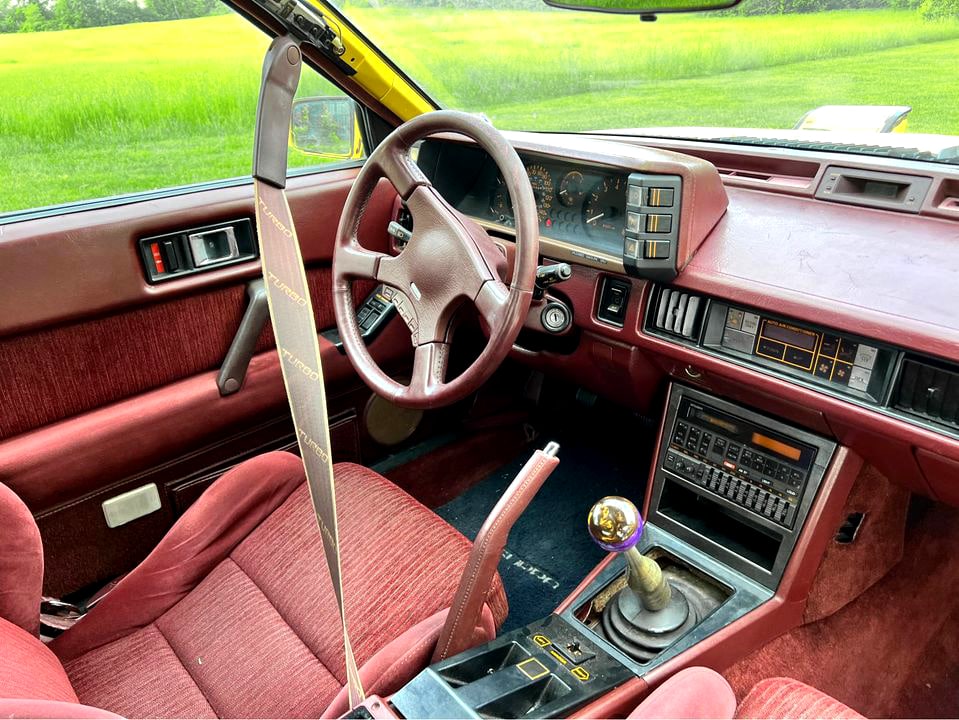
Despite it being a focused RWD sports car, the Starion didn’t skimp when it came to equipment. A lot of it was optional, but some of the higher-end models did have a fair share of creature comforts.
The most basic Starions had manual steering, no air conditioning, and they also did away with the independent rear suspension.
As you go further up the lineup, these options become available, along with cruise control, a trip computer, power windows, and a leather interior.
All things considered, the Starion’s equipment list was pretty generous by 1980s standards, and it does feel somewhat modern in some aspects.
Modification and Tunability

Despite the Starion not being the most popular platform to modify, aftermarket support is surprisingly decent, with companies dedicating themselves to the Starion specifically.
This means that even though the original parts are pretty hard to come by, you can still make sure your Starion is in perfect working order, and even improve on its performance.
There are various turbo upgrades, 240 mm flywheel, and clutch conversions, as well as rear strut bars since those are no longer available from Mitsubishi themselves.
As the engine in the Starion has that legendary Mitsubishi durability, it can handle lots of extra power with ease.
With a few bolt-on mods, you’ll be nudging 400 hp, and let’s not even get into turbo upgrades. That’s the best way to squeeze massive amounts of power out of the Starion, and it’s a surprisingly easy upgrade to do.
While you’d struggle to find any sort of body mods, you can install a wing and a front splitter if that’s the look you’re going for. You can even turn it into a stance car if you’re keen.
Suspension mods are always a great idea, like the ever-important lowering springs or coilovers, an upgraded LSD, and a new set of tires.
With all of that, your Starion can truly impress behind the wheel.
Legacy of the Starquest

It may not enjoy the same level of fame as the cars that came after, but the Mitsubishi Starion still enjoys a cult following, and it’s definitely a car worth considering.
It laid the groundwork for some of the most iconic Mitsubishi cars of all time, and it’s definitely an interesting look at a time when the automaker was more than just a manufacturer of cookie-cutter crossovers.
With its RWD platform, super-durable turbocharged engines, and manual transmission, the Starion is definitely a sports car that will make you smile behind the wheel. Especially if you can forgive its age.
If you’re looking at Z32s, FC RX-7s, or even Subaru XTs, you should definitely also have a look at the Starion.
You’re probably wondering, how much is a Mitsubishi Starion? The average value is right around $18,000. Assuming it’s in good condition, that’s a pretty solid price to pay.
Have you ever gotten behind the wheel of one of these relics? Let us know your experience by leaving a comment below!
If you like this article, share it with your friends! We appreciate your support.

